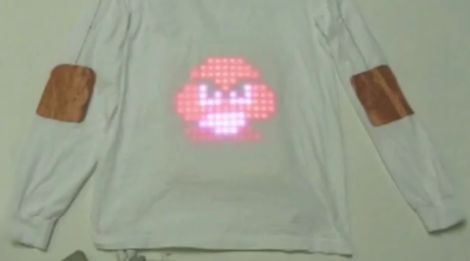
How long has it been since you’ve played a game of tag?
[Sylvia Cheng, Kibum Kim, and Roel Vertegaal] from Queen’s University’s human media lab have concocted a fun twist on the classic game that just might compel you to start playing again.
Their game, called TagURIt, arms two players with Lumalive LED t-shirts which sport embedded touch sensors. A third player, known as the “chaser” attempts to touch either of the other players in order to capture the token displayed on the player’s chest-based LED matrix. The game is score-based, awarding points to the chaser for capturing tokens, while giving the other players points for avoiding capture.
If both players wearing the LED shirts are near to one another, the token will jump to the other player in an attempt to thwart the chaser. In this game, each player is a location-tagged URI, and proximity is determined by either tracking the users with cameras indoors, or via RF sensors if the game is played outside.
It is definitely an interesting way of playing tag, and we imagine it could be quite fun in large groups.
Continue reading to see a video demonstration of the TagURIt game being played.
[via Adafruit blog]
[youtube=http://www.youtube.com/watch?v=G_7i-xGztQc&w=470]















I’m liking the matrix on it. Love to know how they did that.
As for the game bit, it’ll only end in tears! :(
the last thing i need is a luminous goomba to emphasize my gut.
Brilliant!
Fantastic integration of video game style technology and interaction with EXERCISE. Might be just what is needed to get children raised on video games to physically interact and play with others.
Properly done, could earn millions with hope of improved health for our children.
soo where do i get one of those t-shirts? minus the mario mushrooms, ill hack my own.
Wish I had that when I was a kid!
Adding a “zombies” mode might be interesting too. Who ever has the token is a zombie. If they touch another, they get a token which means they are a zombie too. Last man standing wins.
I saw the picture and for an instant thought it was my shirt :o
http://www.youtube.com/watch?v=Eo13f5NRZJg
I’ll second the zombies mode. I’d also like to see a “base station” instead of having one of the players having to wear the hardware.
For all support questions, please visit our Cruz Support Hub!